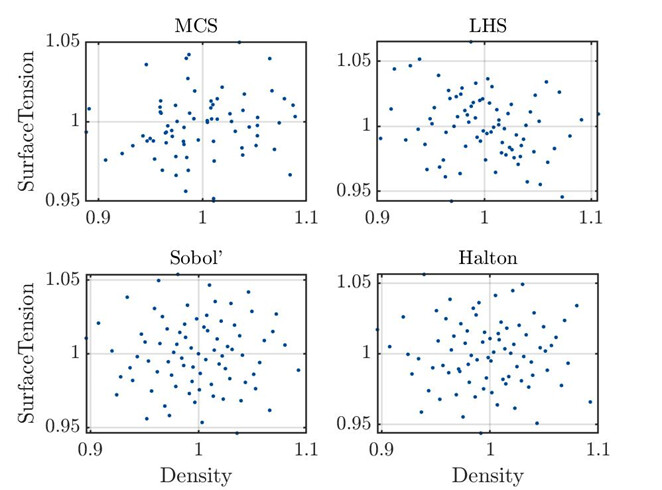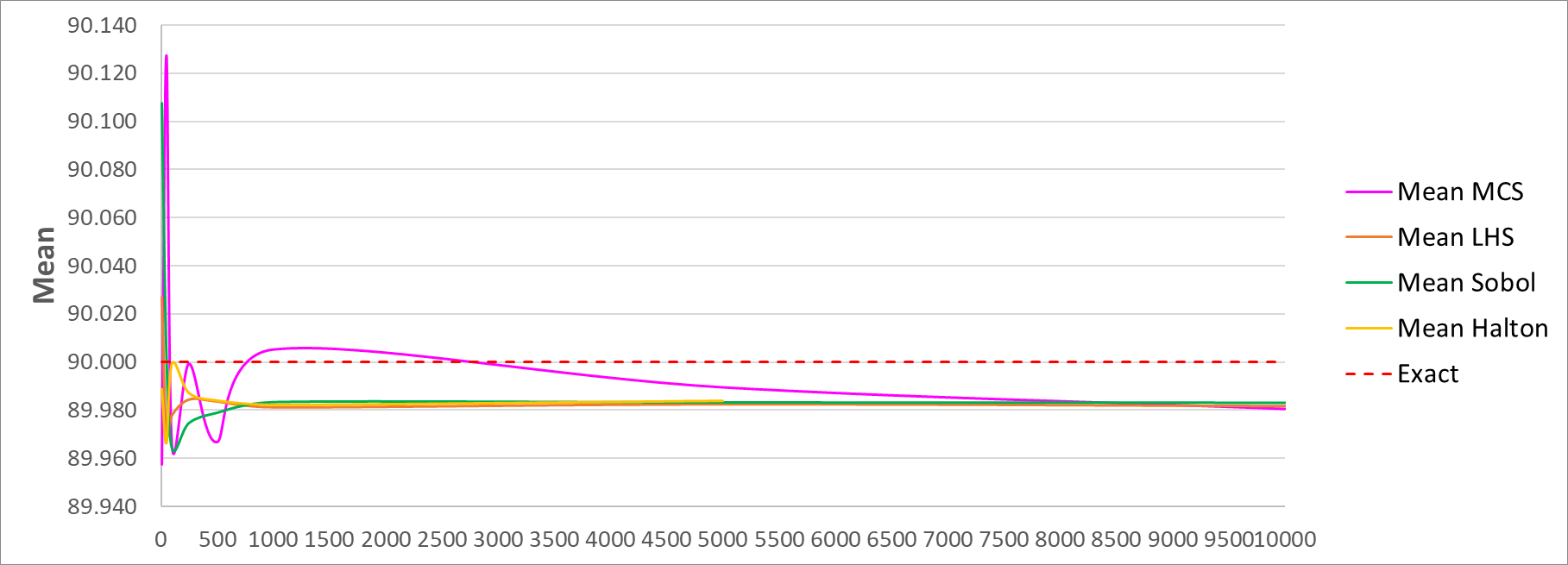clearvars
uqlab
rng(100, 'twister')
ModelOpts.mFile = 'uq_Abs';
myModel = uq_createModel(ModelOpts);
InputOpts.Marginals(1).Name = 'dens';
InputOpts.Marginals(1).Type = 'Gaussian';
InputOpts.Marginals(1).Moments = [1 0.043];
InputOpts.Marginals(2).Name = 'surfT';
InputOpts.Marginals(2).Type = 'Gaussian';
InputOpts.Marginals(2).Moments = [1 0.025];
myInput = uq_createInput(InputOpts);
X_MC = uq_getSample(100,'MC');
uq_figure
uq_plot(X_MC(:,1), X_MC(:,2), '.', 'MarkerSize', 15)
xlabel('$\mathrm{Density}$')
ylabel('$\mathrm{Surface tension}$')
%
X_LHS = uq_getSample(100, 'LHS');
uq_figure
uq_plot(X_LHS(:,1), X_LHS(:,2), '.', 'MarkerSize', 15)
xlabel('$\mathrm{X_1}$')
ylabel('$\mathrm{X_2}$')
%
X_Sobol = uq_getSample(100,'Sobol');
uq_figure
uq_plot(X_Sobol(:,1), X_Sobol(:,2), '.', 'MarkerSize', 15)
xlabel('$\mathrm{X_1}$')
ylabel('$\mathrm{X_2}$')
%
X_Halton = uq_getSample(100,'Halton');
uq_figure
uq_plot(X_Halton(:,1), X_Halton(:,2), '.', 'MarkerSize', 15)
xlabel('$\mathrm{X_1}$')
ylabel('$\mathrm{X_2}$')
uq_figure
subplot(2, 2, 1)
uq_plot(X_MC(:,1), X_MC(:,2), '.', 'MarkerSize', 15)
title('MCS')
ylabel('$\mathrm{Surface Tension}$')
subplot(2, 2, 2)
uq_plot(X_LHS(:,1), X_LHS(:,2), '.', 'MarkerSize', 15)
title('LHS')
subplot(2, 2, 3)
uq_plot(X_Sobol(:,1), X_Sobol(:,2), '.', 'MarkerSize', 15)
title('Sobol''')
xlabel('$\mathrm{Density}$')
ylabel('$\mathrm{Surface Tension}$')
subplot(2, 2, 4)
uq_plot(X_Halton(:,1), X_Halton(:,2), '.', 'MarkerSize', 15)
title('Halton')
xlabel('$\mathrm{Density}$')

